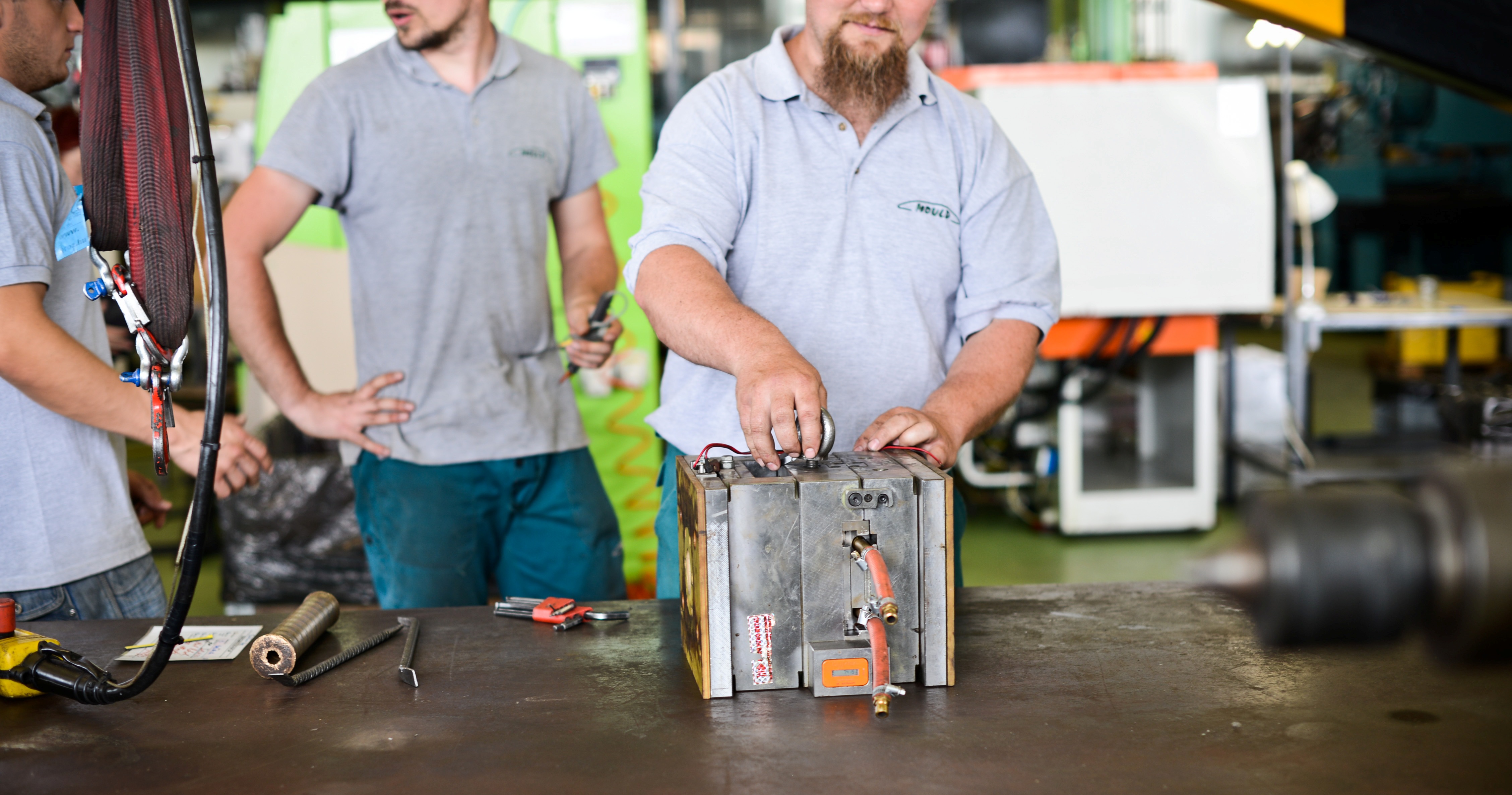
Subtypes
The most important part of the machine is the forming tool. This moulding tool creates and encloses the closed hole in which hot polymer melts are injected at high speed and pressure. Several kind of polymer parts can be produced with a moulding machine with the help of changing tools, so more tools belong to one machine.
The 3D parts are placed between plates in the mould injection machine in the following way: it is divided imaginarily with an unbroken parting plane, then the concave convexities of the steel tool are made on the two sides of the parting plane, which clamp the cavity.
The fact that the tool consists of steel plates makes the use of more and more standardized and pre-fabricated panels possible.
The main parts of the mould are the following: sprue, melt-delivery channels (in case of multi-cavity tools), different dams, traditional and hot runners, ejector systems (to eject finished products from the open mould), - cooling and temperating systems to keep the desired temperature of the mould.
The molten polymer flows into the mould from the hopper of the moulding machine through the sprue. This channel has a diameter of typically 2.5 ÷ 5,0 mm, it widens towards the mould, it is conical so that the solidified polymer material can be removed together with the product. The cooled remains in the channel of thermoplastic polymers can be reground, reprocessed. Mould injection is practically a non-waste technology.
Melt-delivery channels are necessary in case of multiple-cavity moulds. Material flow is led through more channels to make a complex shaped mould. These channels are circular or semicircular sections. Their cross section at the beginning is not bigger than the sprue or its cross section at the end. Multiple-cavity moulds are designed in a way that the polymer material arrives at the dams of each cavity at the same time and same pressure.
Gates are the meeting point of melt-delivery channel and the planned workpiece at the cavity, where the polymer enters the cavity. Its narrow cross section facilitates easy and complete removal of the remains in the channel. So gates are bottle-necked delivery channels, in which warmed-up polymer melt flows very fast and its viscosity decreases. According to the shape and placement of the gates, we differentiate film gates, tab gates, pin gates and submarine (tunnel) gates. Tunnel gates are located below the parting line and they are really narrow channels, placed at a particular point of the mould so that the tool itself cuts the cooled down remains of the channel due to the force of the ejector pin when opening the tool, so there is no need for trueing.
Productivity of mould injection highly depends on the construction of the tool. Productivity index can be increased and the proportion of recycling can be improved too if there is no remains of the channel (which has be to be removed from the finished product- Anguss) or solid polymer material left in the channel running to the workpiece. In modern, multiple- cavity mould construction the plate of the tool which contains the melt-delivery channels is heated lest the polymer material solidifies in it, these are the so called heated or hot runner moulds.
The main mass of the tool has to be heated. Simple tap-water cooling is not adequate in the mould to cool down polymer-melt of 200-300 °C. Balanced, temperated (that is using coolant of the same temperature) cooling has a great effect on shrinkage, remaining tension, quality of surface, dimensional stability of the finished products. Separate cooling lines which circulate water are responsible for temperating the mould, and the circulation and separated cooling are done by cooling aggregate. Designing cooling lines is an important task of tool designers.

